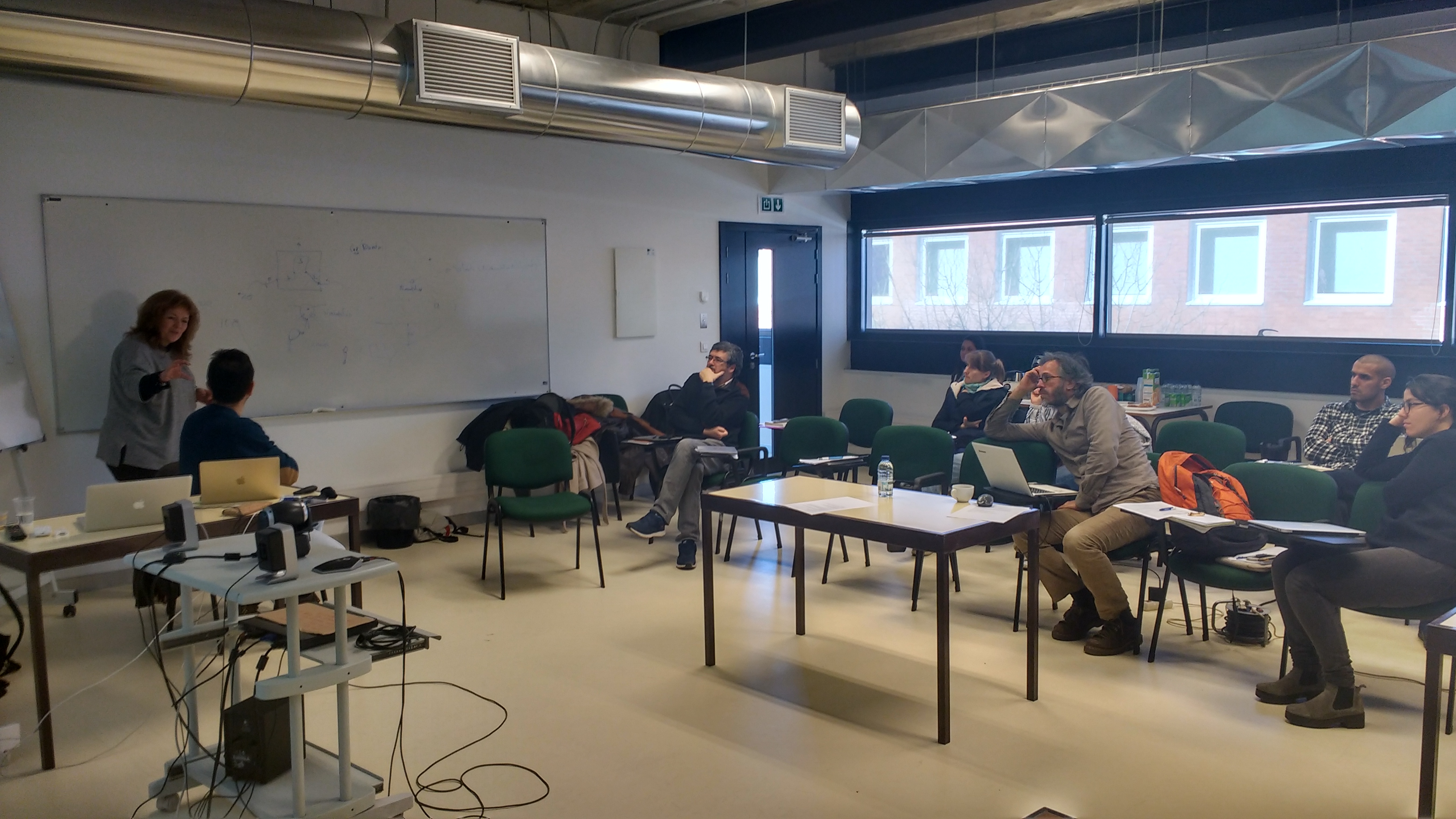
Rita Nolasco, from the University of Aveiro, explains some of the intrincate aspects of the biophysical models during the meeting. From left to right: Rita Nolasco, Henrique Queiroga, Jesus Dubert (University of Aveiro), Antonella Rivera and Katja Geiger (University of Oviedo), Gonzalo Macho (University of Vigo), David Mateus (University of Evora) and Elena Ojea (University of Vigo). In the meeting there were also Eric Thiebaut (Station Biologique de Roscoff) and Amandine Nicolle (ENSTA Bretagne), who participated through videoconference, as well as Teresa Cruz, Joana Fernandez and David Jacinto (University of Evora) and Elsa Vazquez and Alba Aguión (University of Vigo).
During the 29 and 30th of January members of PERCEBES met at the Complexo Interdisciplinar de Ciências Físicas Aplicadas à Nanotecnologia e Oceanografia (CICFANO), in the University of Aveiro, Portugal, to discuss different aspects of the biophysical models of larval transport. One of the aims of project PERCEBES is to develop models to predict the drift of the stalked barnacle larvae during their open water, planktonic life. For this, the groups at Aveiro (Portugal) and ENSTA (France) are developing hydrodynamic models that simulate the movement of water in the coast. Once those models are available, we will inject a population of virtual larvae which will behave according to what we know of these animals. This meeting had two purposes. The first was to define the time and space scales of the hydrodynamic model, as well as its resolution. The second was to agree on the characteristics and behaviour of the larvae that will be injected into the model. Some aspects are still unknown or very poorly constrained, thus we needed to reach a consensus based on the best available knowledge, and propose different scenarios. This is a critical step in our way to develop a bioeconomic model, which is one of the two main scientific goals of this project.
